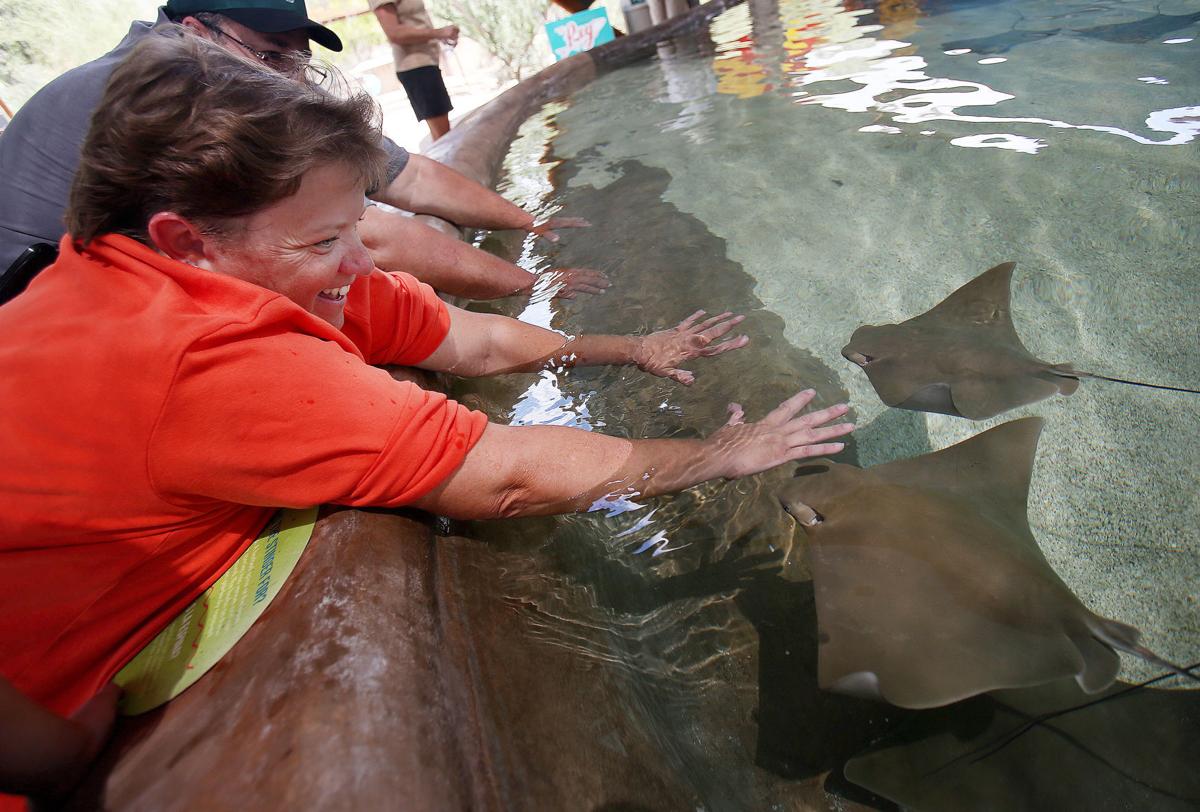A new “Stingray Touch” exhibit — in which visitors are able to observe, touch and feed stingrays — opened Friday at the Arizona-Sonora Desert Museum.
A pool at the museum holds about a dozen juvenile stingrays — with their stingers trimmed regularly to protect visitors from being stung.
“What a neat experience!” exclaimed museum visitor Stephanie Garcia after a pleasing close encounter with one of the Atlantic cownose stingrays. “They look like they’re flying in the water. You put your hands out, and they find you and caress you” as they swim past.
Another visitor, Greg Zielinski, observed that “it’s definitely something you don’t expect to see in the desert.”
Craig Ivanyi, executive director of the museum west of Tucson, said, “It can be a very special experience when people can get close to animals and interact with them,”
Ivanyi emphasized that the touching part of the experience is designed to “balance visitor expectations with animal welfare.”
“We’re saying that essentially you are going to be touched by stingrays,” he said. “Let them come to you as opposed to you reaching out to them, so they are doing it of their own volition. These animals are willingly coming up to people” and touching them.
The juvenile stingrays, which measure about 18 inches across, were born in captivity and donated to the museum by the Phoenix Zoo. They are housed in an outdoor 14,500-gallon pool of water covered by canopies. It’s 37 feet long, 18 feet wide and 3 feet deep at the center.
WHY STINGRAYS?
Many people might wonder: Why are stingrays on display at a museum focused on life in the Sonoran Desert?
The connection, say museum officials, is that stingrays swim in the Gulf of California (Sea of Cortez), which is considered a vital part of the overall Sonoran Desert ecosystem.
“You have this large body of water that’s separating two portions of desert habitat,” Ivanyi said. “When you look at our region, it has a lot to do with water from the Gulf. Some of the vegetation and animals we are so familiar with, much of it is made possible because we have two rainy seasons with water coming straight from the Gulf.”
He said the stingray exhibit serves as “an extension of the aquarium we already have here” featuring a variety of fresh-water and marine animals.
STING PROTECTION
Each stingray’s stinger, near the base of the tail, “is clipped back in a way similar to trimming fingernails,” Ivanyi said.
The stingers grow back naturally and will need to be trimmed regularly, he said.
FEEDING
Museum visitors can expect to be touched by stingrays if they position themselves near the edge the pool, Ivanyi said, but he noted that there will be opportunities to feed the animals only three times a day.
“There’s a variety of feed available,” he said. “Most will be pieces of fish as well as shrimp.”
COST
General admission to the museum, at 2021 N. Kinney Road, is $20.50 with reduced rates available for children, seniors, members of the military and residents of Arizona or Sonora.
There is an additional fee of $3 to view the stingrays and a $3 fee to feed them.
The exhibit is open from 8:30 a.m. to 4 p.m. daily.
Information: www.desertmuseum.org





